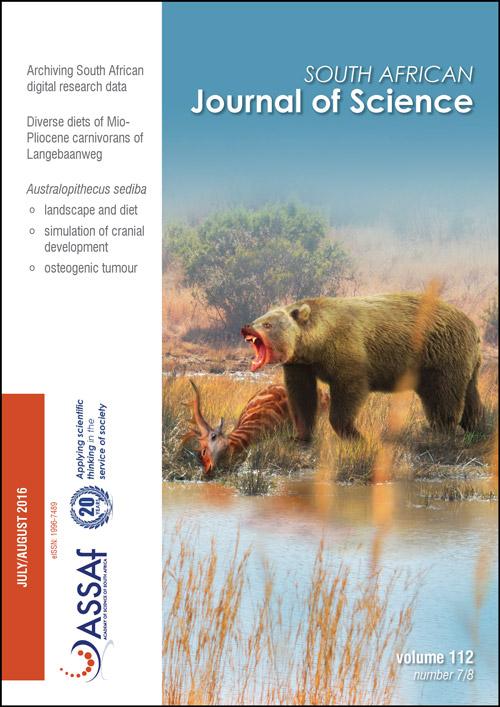Earliest hominin cancer: 1.7-million-year-old osteosarcoma from Swartkrans Cave, South Africa
DOI:
https://doi.org/10.17159/sajs.2016/20150471Keywords:
palaeopathology, oncology, malignant neoplasia, metatarsal, micro-computed tomographyAbstract
The reported incidence of neoplasia in the extinct human lineage is rare, with only a few confirmed cases of Middle or Later Pleistocene dates reported. It has generally been assumed that pre-modern incidence of neoplastic disease of any kind is rare and limited to benign conditions, but new fossil evidence suggests otherwise. We here present the earliest identifiable case of malignant neoplastic disease from an early human ancestor dated to 1.8–1.6 million years old. The diagnosis has been made possible only by advances in 3D imaging methods as diagnostic aids. We present a case report based on re-analysis of a hominin metatarsal specimen (SK 7923) from the cave site of Swartkrans in the Cradle of Humankind, South Africa. The expression of malignant osteosarcoma in the Swartkrans specimen indicates that whilst the upsurge in malignancy incidence is correlated with modern lifestyles, there is no reason to suspect that primary bone tumours would have been any less frequent in ancient specimens. Such tumours are not related to lifestyle and often occur in younger individuals. As such, malignancy has a considerable antiquity in the fossil record, as evidenced by this specimen.
Downloads
Published
Issue
Section
License

All articles are published under a Creative Commons Attribution 4.0 International Licence
Copyright is retained by the authors. Readers are welcome to reproduce, share and adapt the content without permission provided the source is attributed.
Disclaimer: The publisher and editors accept no responsibility for statements made by the authors
How to Cite
- Abstract 15236
- PDF 2878
- EPUB 301
- XML 353
- Supplementary Material 313












.png)